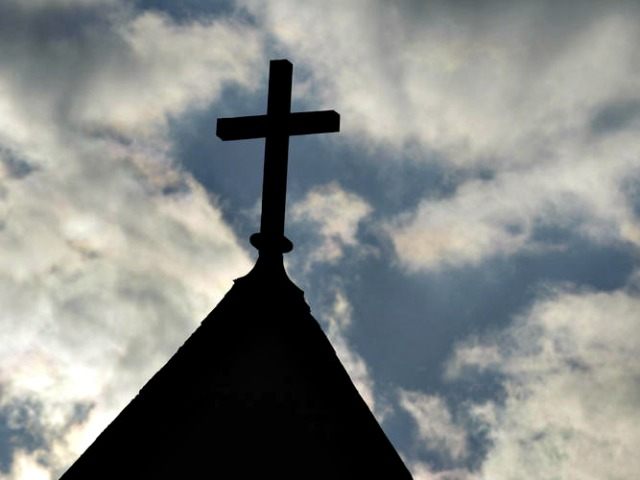In a recent article in Salon Magazine, pro-abort Patricia Miller can barely control her glee in the numerical decline in the number of Americans professing an affiliation with the Catholic Church, as she imagines a nation where the most vociferous opponent to abortion-on-demand is silenced.
Miller asserts that conservative Catholic bishops have had a disproportionate influence in the culture wars, and she envisions the falling number of Catholics as lessening bishops’ moral authority on such issues as abortion and religious liberty.
According to a comprehensive Pew Center survey published on May 12, the number of U.S. citizens that identify themselves as Catholic has dropped precipitously in just seven years, from 23.9% of the population in 2007 to just 20.8% in 2014, a decline of 3.1%.
“It was the Catholic bishops,” says Miller, “who single-handedly made coverage of abortion in the Affordable Care Act an issue that almost killed it and who ginned up the ‘religious liberty’ meme to oppose both the contraception mandate and same-sex marriage—despite support of nearly two-thirds of Catholics on both issues.”
Remarkably, Miller attributes the decline in Catholic numbers to its supposed rigidity on moral issues, when most commentators have more logically advanced the opposing thesis: that faiths—such as Evangelicalism—that have maintained a moral high bar have been better able to hold on to their adherents.
There are two interesting facts that seem to pull the rug out from under Miller’s wishful reveries. On the one hand, according to the Pew report those religions that are losing the most members are overwhelmingly liberal, not conservative. One could say without fear of contradiction that the more a religion resembles reigning liberal culture, the less likely it is to keep its members.
Mainline Christian denominations that have been willing to bend with every new cultural trend have suffered devastating losses in recent years. As a group, it has been “mainline” Protestant churches that have lost the most members, falling by 3.4% between 2007 and 2014. First among the list are the Episcopalians, who have embraced divorce and remarriage, contraception, abortion, and gay sex.
According to its own statistics, the Episcopal church has shown a steady decline in numbers, with falling membership every single year since 1965. In that year, the church had 3,615,000 baptized members, but by 1970 the number had already dropped to 3,475,000. In 2001, the total number of baptized Episcopalians had dropped to 2,317,000, a whopping decrease in 35 years of 1,300,000 baptized members.
The Pew study found, in fact, that of the all the major subgroups within American Christianity, it was mainline Protestantism—a tradition that includes the United Methodist Church, the American Baptist Churches USA, the Evangelical Lutheran Church in America, the Presbyterian Church (U.S.A.), and the Episcopal Church—that “appears to have experienced the greatest drop in absolute numbers.”
Evangelicals, on the other hand, who have generally held to biblical morality, have barely experienced any decline at all, falling less than a single percentage point from 2007 to 2014.
But Miller’s erroneous logic doesn’t end here. She sees the salvation of America in the religious “nones,” souls who claim no affiliation with any particular religion whatsoever.
Catholic defection, says Miller, “is the single greatest factor driving the much-heralded rise of the nones, who now account for just under 23 percent of the population.” Nones, writes Miller, are “liberal-leaning on social issues” and now make up a larger share of the population “than the share of Catholics.”
What Miller fails to mention, is that religious “nones” are not freethinking intellectuals who have carefully examined the proposals of different religions and rationally embraced an irreligious creed. They are overwhelmingly high-school educated, white males who earn less than $30,000 a year.
According to the Pew survey, the number of religiously unaffiliated adults describing themselves as “nones” increased significantly in the seven-year period between 2007 and 2014, adding some 20 million to their numbers, and they now account for nearly 23% of the US population.
Among the religiously unaffiliated, however, only a small fraction possesses a college degree. According to the Pew report, 45% of religious “nothing in particulars” have a high school diploma or less, while only 15% have a college degree and even fewer—9%—a post-graduate degree. The numbers change only slightly when taking into account all religious “nones,” with 38% having a high school education at most.
So yes, a decline in the numbers of Catholics may signal a positive trend where your yardstick is a greater openness to killing unborn children in the womb. But if you are actually concerned about the future of the nation, a drop in Catholics may not be the blessing that liberals assume it is.
Follow Thomas D. Williams on Twitter @tdwilliamsrome

COMMENTS
Please let us know if you're having issues with commenting.